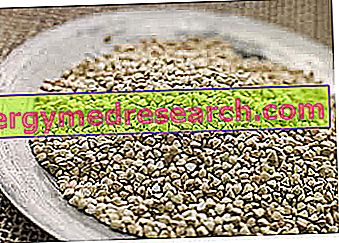DOLMEN ® is a drug based on Tenoxicam acid
THERAPEUTIC GROUP: Non-steroidal anti-inflammatory and antirheumatic drugs
IndicationsAction mechanismStudies and clinical effectiveness Usage and dosage instructionsWarnings Pregnancy and lactationInteractionsContraindicationsUndesirable effects
Indications DOLMEN ® Tenoxicam
DOLMEN ® is successfully used in the control of pain symptoms in the musculoskeletal system, present during rheumatic and degenerative diseases.
Mechanism of action DOLMEN ® Tenoxicam
DOLMEN ®, a drug based on Tenoxicam, is one of the symptomatic medicines used to treat pain during rheumatic and degenerative diseases.
Belonging to the class of non-steroidal anti-inflammatory drugs, it has as active ingredient a molecule of recent characterization known precisely as Tenoxicam falling under the chemical-pharmaceutical category of oxicam.
These active ingredients, characterized by marked anti-inflammatory and analgesic activity, which is essentially expressed through the selective inhibition of cyclooxygenase 2, are distinguished from other NSAIDs, mainly due to the long duration of action, which allows their simple intake in daily single administration.
Taken orally and rapidly absorbed at the gastro-intestinal level, this active ingredient is distributed between the tissues by binding to plasma proteins, persisting in circulation and in place for about 24 hours.
Concentrated mainly on the articular level, inhibiting cyclooxygenases 2 is able to reduce the production of prostaglandins and bradykinin thus determining:
- Reduction of the recruitment of inflammatory cells;
- Reduction of the vasopermeabilization and vasodilator stimulus;
- Reduction of pain stimulus;
- Protection from damage induced by reactive oxygen species and proteolytic enzymes.
Studies carried out and clinical efficacy
1. THE EFFICACY OF TENOXICAM AS A LOCAL ANALGESIC
Knee Surg Sports Traumatol Arthrosc. 2005 Nov; 13 (8): 658-63.
Important study that demonstrates how the intra-articular administration of Tenoxicam can guarantee a longer and more effective analgesic effect than that exercised by other analgesics including clonidine and morphine.
2 . THE TENOXICAM NEUROPROTECTIVE ACTIVITY
Neurochem Res. 2005 Jan; 30 (1): 39-46.
Experimental study that investigates the neuroprotective properties of NSAIDs, revealing how Tenoxicam can be effective in reducing cellular damage following ischemia, protecting cells from damage induced by reactive oxygen species.
3.TENOXICAM AND THORACOTOMY
Anaesth Intensive Care. 2002 Apr; 30 (2): 160-6.
Double-blind clinical trial showing that intravenous administration of 20 mg of tenoxicam is effective in controlling pain following thoracotomy. Higher doses showed the same therapeutic effect without any additional benefit.
Method of use and dosage
DOLMEN ®
Tenoxicam 20 mg coated tablets;
Granulated for Tenoxicam 20 mg oral suspension.
Despite the definitive dosage should in any case be established by the doctor based on the patient's health status, physio-pathological conditions and tolerability to therapy, it is generally recommended to take 20-40 mg daily of Tenoxicam for the treatment of severe pain symptomatology, 10-20 mg for that of modest entity.
Variations in standard dosages should be evaluated for elderly patients or those simultaneously affected by liver and kidney disease.
Warnings DOLMEN ® Tenoxicam
In light of the potential side effects associated with Tenoxicam therapy and the numerous conditions that may compromise its efficacy and safety, it would be advisable to take DOLMEN ® only under strict medical supervision.
Patients suffering from cardiovascular, coagulative, renal, hepatic, allergic and gastrointestinal diseases should be monitored periodically throughout the therapeutic process, in order to evaluate the efficacy and safety of the therapy in progress.
Following the appearance of adverse reactions, including dermatological ones, the patient should contact his doctor with whom to consider the possibility of suspending the therapy in progress.
Tenoxicam intake may alter some blood chemistry parameters, masking existing pathological patterns.
DOLMEN ® contains lactose, therefore its intake is contraindicated in patients with lactose intolerance, glucose-galactose malabsorption syndrome and lactase enzyme deficiency.
PREGNANCY AND BREASTFEEDING
In light of the numerous studies published in the literature that show how the intake of NSAIDs in pregnancy can increase the risk of serious malformations or unexpected abortions in the unborn child, it would be appropriate to extend the contraindications to the use of DOLMEN ® also to pregnancy and the subsequent period breastfeeding.
Such reactions could be further complicated by the increased bleeding risk in the parturient such as to compromise both their own health and that of the fetus.
Interactions
Pharmacokinetic studies have shown that the simultaneous intake of some active ingredients may alter the pharmacokinetic and pharmacodynamic characteristics of Tenoxicam, thereby compromising both the therapeutic efficacy and the safety profile of the therapy.
Particular attention should therefore be given to the concomitant assumption of:
- Oral anticoagulants and inhibitors of serotonin reuptake, due to the increased risk of bleeding;
- Diuretics, ACE inhibitors, angiotensin II antagonists, methotrexate and cyclosporin, due to their ability to enhance the hepatotoxic and nephrotoxic effects of Tenoxicam;
- Non-steroidal anti-inflammatory drugs and corticosteroids due to damage to the gastro-intestinal mucosa;
- Lithium, given the increased toxic effects of the same;
- Cimetidine, able to increase the plasma concentrations of Tenoxicam, thus increasing the incidence of side effects.
Contraindications DOLMEN ® Tenoxicam
The use of DOLMEN ® is contraindicated in case of hypersensitivity to the active ingredient or to one of its excipients or to chemically and functionally related active ingredients, angioedema, peptic ulcer, history of intestinal bleeding, ulcerative colitis, Crohn's disease or previous history for the same pathologies, cerebrovascular bleeding, hemorrhagic diathesis or concomitant anticoagulant therapy, renal and hepatic failure.
Undesirable effects - Side effects
Although tenoxicam is generally well tolerated and has no particularly serious side effects, it is useful to remember that, belonging to the therapeutic category of NSAIDs, its intake in predisposed patients or at high doses and long periods could increase the risk of onset of: gastric pyrosis, gastralgia, nausea and vomiting, constipation and in severe cases ulcers and hemorrhages, hearing and sight disorders, headache, insomnia, drowsiness, confusion and tremors, erythema, rash, urticaria and in severe cases bullous disease, hypertension, edema sloping and heart failure.
Note
DOLMEN ® is a prescription-only drug.



